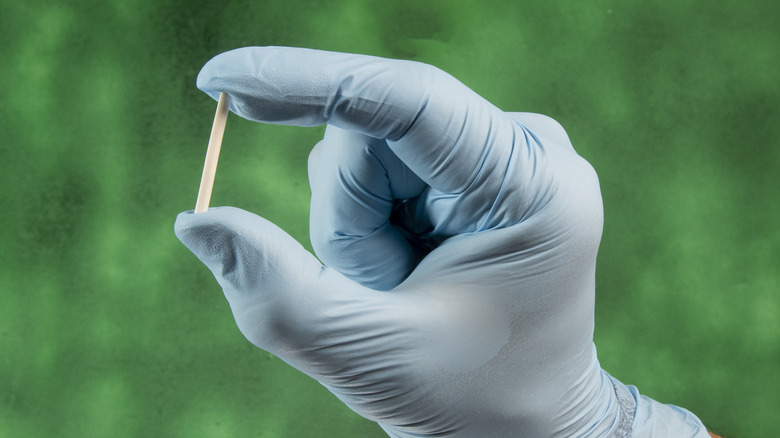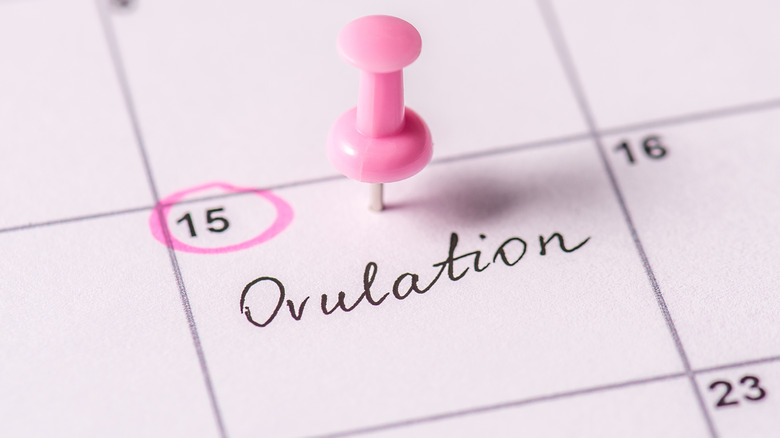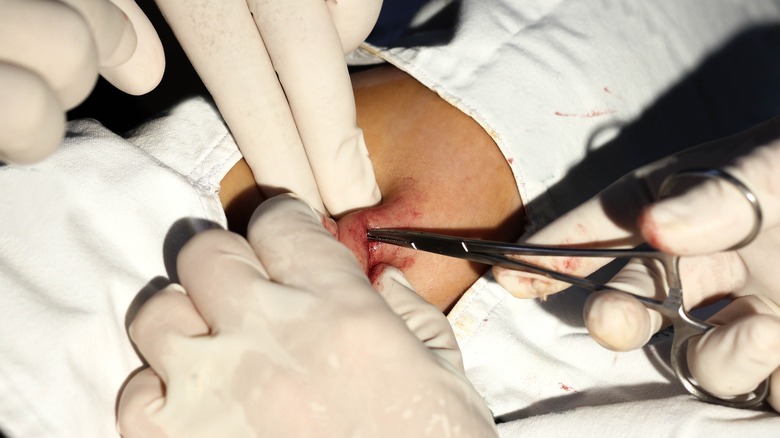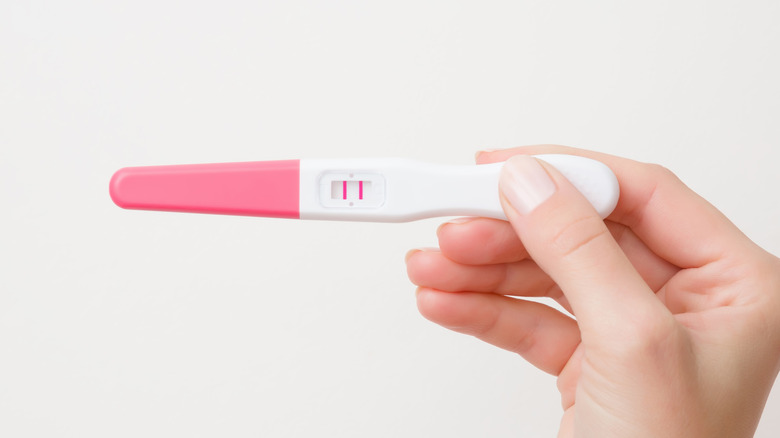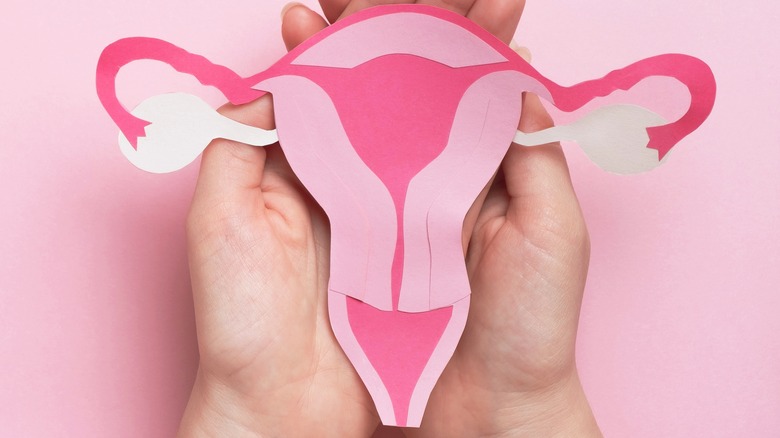Thinking Of Getting A Birth Control Implant? Here's What To Expect
Birth control has changed a lot, from the first reports of condom usage in ancient Greece to the introduction of the first birth control pill in 1950. Today, we have multiple forms of birth control that offer protection against pregnancy, many of which are more than 90% effective at doing so. Still, more methods are continuing to be released, allowing men and women to determine their best course of action when it comes to preventing pregnancy.
A newish form of birth control is the birth control implant, which was released in the United States in its current upgraded form in 2006. Today, you may know it by its brand name, NEXPLANON. The birth control implant seems like something straight out of a science fiction film. Implanted in the arm, it's supposed to help prevent pregnancy while it's inserted, but it's easily removable to allow a woman to get pregnant if and when she chooses. If you're researching your options and are curious about the birth control implant, keep reading to learn more about its insertion, removal, side effects, and more.
How is a birth control implant inserted?
The birth control implant gets inserted under the skin of your upper arm. The implant itself sits inside a tool, which, when inserted into the skin, moves the implant from the tool into your arm. Typically, your doctor will ask you which arm you want your birth control implant in before they numb the insertion area. After the birth control implant is safely in your arm, your doctor will bandage the area with a pressure bandage to protect it while it heals and reduce bruising. They'll also discuss any aftercare instructions with you.
Although the process is usually very quick, you might feel some pain or discomfort. This usually comes from the numbing shot rather than the insertion of the implant. The shot can cause a stinging sensation in the arm until the medicine inside begins to numb the area, which happens quickly. Once the numbing agent begins to work, you likely won't feel the birth control implant insertion.
How a birth control implant works
The birth control implant is about an inch and a half long, and it's flexible to move with your arm comfortably. In other words, you won't really notice it once it's inserted. But your body will notice it's there as it goes to work to protect you from pregnancy.
This small device contains progestin, a hormone that prevents ovulation from happening. The implant continuously releases enough of the hormone to create an environment in the uterus and cervix that isn't welcoming for egg fertilization and implantation. All this happens without you feeling anything other than some potential side effects of using birth control.
A birth control implant is a form of long-lasting birth control, so you won't need to worry about replacing it frequently. This device lasts up to three years and is relatively easy to remove and replace, but it's crucial to get it replaced before its expiration date for it to maintain its efficacy. If you have one inserted during the first five days of your period, you can get immediate protection against pregnancy. Otherwise, it may take about one week to offer maximum protection.
Potential side effects of a birth control implant
Although many people have little to no side effects from using the birth control implant, it is possible to have some, as with any form of hormonal birth control. The most common side effect women face is spotting, sometimes for months after the birth control implant has been inserted. This typically happens because your body can take time to figure out its new hormone levels, and these hormones affect how your natural period works. If you don't experience spotting, you might instead have heavier or lighter periods than you used to have on a different birth control method or when using no hormonal birth control.
Some people have other side effects, too, like ovarian cysts, weight gain, and headaches. Occasionally, issues can stem from the insertion of the implant, like pain around the insertion site or an infection in the area. Always keep your doctor aware of any side effects you think might be related to your birth control implant, and make an appointment, if needed, to address your concerns.
The birth control implant could be unsafe for people with certain conditions, so be sure to talk to your doctor beforehand if you have high blood pressure, diabetes, a risk of blood clots, gallbladder disease, or high cholesterol (via Mayo Clinic).
It's highly effective at protecting against pregnancy
The primary reason birth control options like the birth control implant were invented is to protect against pregnancy. So, it's not surprising that the birth control implant is effective at doing so. What might be surprising to you is just how effective it is at protecting against pregnancy.
According to NEXPLANON, it's one of the most reliable forms of birth control, preventing up to 99% of pregnancies. That puts it on the same level as many intrauterine devices like Mirena and more invasive sterilization procedures.
The most important thing to remember when you have a birth control implant in place is that it's currently only considered effective for up to three years. If you want to continue protecting against pregnancy with the implant after three years, you'll need your current one removed and a new one in place. Otherwise, using a backup form of birth control is necessary to prevent pregnancy.
No, it won't protect against STIs
Condoms can help keep you protected against both pregnancy and sexually transmitted infections (STIs). However, implantable birth control like NEXPLANON does not work the same way. This form of birth control is solely designed to protect against pregnancy, but since it isn't an external method of birth control, it can't keep you safe from STIs that can be spread by skin-to-skin contact or contact with bodily fluids.
Although some STIs can be treated relatively easily, others are ones you might have to deal with for the rest of your life. For example, genital herpes and human immunodeficiency virus (HIV) remain in your body for life, and can cause continuous symptoms. Rather than mistakingly relying on your birth control implant to keep you safe, it's best also to use condoms during sex and only have sex with partners who understand the importance of safe sex. This way, you'll boost your protection against STIs and gain a bonus: even more protection against pregnancy.
What to expect with your insurance coverage
At the time of this writing, 29 states and the District of Columbia require insurance companies to cover prescription contraceptives for women (via the Kaiser Family Foundation). Unfortunately, that leaves 21 states that don't have this requirement, including Tennessee, Nebraska, Indiana, and Florida. Even if you live in a state with required coverage, that doesn't necessarily mean that the total cost of your birth control will be covered by insurance, potentially leaving you with at least some out-of-pocket costs for your new prescription.
Without insurance, NEXPLANON generally costs about $1,000 (per NEXPLANON). While this does protect you against pregnancy for up to three years, the upfront cost is a lot to pay, especially if you figure in the cost of the necessary doctor visits for the implant. If you're unsure if your insurance covers a birth control implant, you can call your insurance's customer service team to check for you. Your doctor's office might also be able to find out if you have coverage and what your expected costs may be.
Can I get a birth control implant after I give birth?
According to the March of Dimes, most women should wait at least 18 months after having a baby to get pregnant again. Of course, no birth control method is 100% reliable, but using birth control can significantly increase your chances of not getting pregnant again once your doctor gives you the green light to have sex again after giving birth. Fortunately, many women can safely receive a birth control implant immediately after giving birth — even while they're still in the hospital recovering.
However, breastfeeding mothers might be advised not to get the birth control implant inserted immediately upon giving birth. NEXPLANON recommends waiting to get the implant until at least four weeks pass after having your baby. This is because the hormones contained in the implant can pass into the breast milk. It's best to discuss your breastfeeding and birth control plans with your doctor and your baby's pediatrician to determine the safest route for you both.
Removing a birth control implant
The birth control implant must be removed within three years of the date you had it inserted to ensure that it continues to deliver the proper amount of progestin to protect against pregnancy. Schedule your appointment with your doctor a couple of months before the expiration date to ensure you can get one on time.
The removal itself is a minor outpatient surgical procedure you can have done in your doctor's office. The process typically takes just a few minutes. Your doctor will start by numbing your arm with an anesthetic. Then, they'll make a small incision to remove the birth control implant from your arm. If you want a new implant in place, your doctor will insert a new one at this time. Finally, your doctor will clean and bandage the area and give you instructions for caring for your incision at home. If you got a new implant inserted, you might need to wear a pressure bandage on your arm for the next 24 hours to reduce swelling and bruising.
Pregnancy could happen quickly after removal
Birth control implants can begin working right away, depending on when you have one inserted. Similarly, they stop protecting against pregnancy soon after they're removed. This might be good news for women who want a birth control method that gives them ultimate control over when they get pregnant, because the implant can be removed at any time during its three-year effective period.
On the other hand, if you don't want to get pregnant right away, you'll need to use a backup method of birth control if you plan to have sex, as pregnancy will be possible. Pregnancy can happen as quickly as a week after removing the birth control implant. If you are sure you don't want to get pregnant for a while, you might consider getting a new implant inserted at your removal visit, keeping you protected with no gaps.
Alternatively, set up another appointment with your doctor as soon as possible if you're thinking about different forms of birth control. Until then, a condom might be your safest bet.
What happens if I get pregnant after a birth control implant is inserted?
Despite being 99% effective at preventing pregnancy (per NEXPLANON), 99% isn't 100%. That means that, yes, there is a small chance that you can become pregnant while using a birth control implant. If you have a birth control implant and you think there's a chance you might be pregnant, it's important to contact your doctor as soon as possible. In rare cases, women with birth control implants who become pregnant can have ectopic pregnancies, which can cause severe complications or death.
An ectopic pregnancy occurs when a baby begins developing outside the uterus, where it typically resides. This sometimes happens in the fallopian tube, but the fetus can also grow in the ovary, cervix, and other areas. This condition does not allow the fetus to grow properly, leading to fetal death. Women having an ectopic pregnancy may experience pelvic and some vaginal bleeding before having more severe symptoms, like heavy bleeding, fainting, and intense pain.

